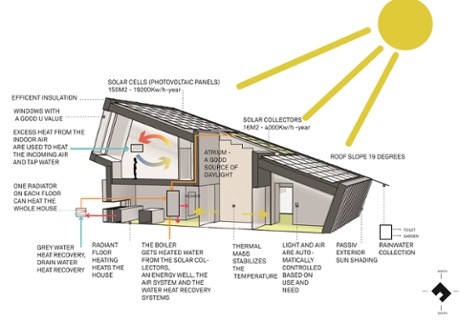Has the EU’s carbon trading system made business greener?
The EU is celebrating 10 years of the world’s largest carbon trading system this year by looking at new reforms to keep it on track. The emissions trading scheme (ETS), which covers half of Europe’s CO2 emissions by limiting the number of carbon permits available to energy generators and industry, has been dogged by low prices and oversupply of allowances.
The problems are largely ones of success – carbon emissions are lower than anticipated. But much of the oversupply was caused by the recession in Europe, so has the trading system been a waste of time or has it changed business attitudes and operations?
To answer these questions the Prince of Wales’ Corporate Leaders Group commissioned a report, 10 years of Carbon Pricing in Europe – a business perspective, which was released last week. The report is based on interviews with a small number of companies from a variety of sectors that are mandated into the ETS to see what impact it has had on them.
For some, the responses were pretty much to be expected. EDF and Shell have long been advocates of the carbon market and higher prices. Energy companies need the price to justify the right investment decisions at the right time – and many of them are able to pass on the cost of carbon allowances to their consumers – so they would be in favour of a high carbon price.
Although they profess the importance of the carbon market, it is clear that other policies, such as those promoting renewables or nuclear energy, have had more impact.
Carbon trading driving emission cuts
But then there are the energy intensives. Often vulnerable to international competition and with limited options to reduce their CO2 emissions, these industries generally have not been enthusiastic advocates of the carbon price. But here the European carbon market does seem to have had a genuine impact. Steel company ArcelorMittel acknowledged the importance of monitoring and reporting emissions to manage them.
Tata Steel Europe said that even in the depths of the recession some of its facilities were taking steps that would have previously been unacceptable or impossible in order to stay afloat, because reducing emissions is synonymous with efficiency. To the same effect, cement company Italcementi uses CO2 intensity as an indicator of efficiency as it “combines most of the key levers to industrial excellence”.
It seems unlikely these companies would have got this far without the ETS.
Next, we should consider the industries that are within the ETS but for which energy is not such a significant cost or where there are other options. What is interesting here is how the most advanced companies have moved beyond compliance to more interesting and creative ways of cutting emissions.
There are plenty of examples of companies using their waste heat or buying heat from their neighbours, thus going the extra mile to improve efficiency. The bottling company O-I Group uses waste heat to pre-heat raw materials and to heat the floor in their plant. Others have created new business models that have provided a lucrative income stream from offering consultancy advice to others. Here the ETS has provided a valuable focus on carbon and underwritten the improvements made.
Finally, there are those companies that probably would not have gone beyond compliance if they had not had leaders with vision. Where senior managers decide to take carbon seriously there can be huge benefits, even where energy is a small proportion of total costs.
Jaguar Land Rover and GlaxoSmithKline have directed new resources to cutting carbon with astonishing success. This has been crowned by a reduced carbon liability. Clearly in these companies the ETS alone has not driven this transformation, but the senior management teams would not have had this on the agenda without the carbon price being discussed at board level. It is noteworthy that these businesses instigated action in 2007 and 2008 when the allowance price was relatively stable in the €20-€25 range.
What needs to happen next? Europe is embarking on reform of the ETS now. Clearly getting prices back up to the lofty levels of 2007 would help but, ironically, the companies that have focused on carbon have found the low hanging fruit of cheap emissions reductions to be almost limitless, which will make it a bigger struggle to raise the price.
Do we need a higher price then? Yes. To tackle the challenging industries that will need technological breakthroughs we will need higher carbon prices to incentivise more reductions and to fund innovation.
guardian.co.uk © Guardian News & Media Limited 2010
Published via the Guardian News Feed plugin for WordPress.






